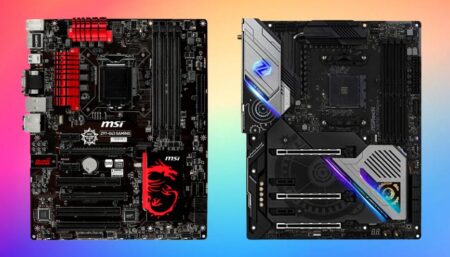![What Is AAFP On The Motherboard? [2024]](https://www.ingameloop.com/wp-content/uploads/What-Is-AAFP-On-The-Motherboard-2.jpg)
If it’s your first build, building a computer can seem intimidating. It’s a high-stakes jigsaw puzzle with relatively expensive components for the majority of individuals. But it’s not as difficult as it might seem at first. If you keep trying you can always achieve anything you desire. So today we will discuss what is AAFP on the motherboard and all you need to know. In this post, we will explain what AAFP is on your motherboard and how to deal with it in order for your build to function properly.
Key Takeaways
- AAFP stands for Analog Audio Front Panel, which is a connector on the motherboard that connects to the front panel audio ports of the computer case.
- It allows the user to plug in headphones, speakers, or microphones to the front of the computer, instead of the back.
- It consists of 10 pins, arranged in two rows of five, with one pin missing for orientation purposes.
- It follows the Intel HD Audio standard, which defines the pin assignments and functions for each wire.
- It can support up to eight audio channels, as well as features like jack detection, auto-switching, and noise cancellation.
AAFP on Motherboards: What Are They?
AAFP stands for Analog Audio Front Panel having a 10-pin connector. In essence, it’s a header where you connect the audio I/O from the front panel of your case. Any 10-pin audio interface, nevertheless, can be connected to the connector. Either legacy AC’97 or HD Audio must be supported. The more contemporary and superior interface, HD Audio, is the default setting on the majority of motherboards. However, you will need to change the BIOS settings if you want to use AC’97.
The majority of motherboards also provide two audio interfaces: AAFP, which connects to the case’s audio I/O, and the rear, which serves as the primary audio interface. In either case, it’s a good idea to keep both interfaces active because it gives you more connectivity options and the opportunity to simultaneously connect more audio devices. The AAFP header makes it convenient to connect your headphones and microphone to these front ports rather than to the awkwardly placed audio ports on your motherboard’s I/O shield at the back of the case.
Where on the Motherboard Is It Found?
The AAFP connector is typically located extremely close to the bottom of the motherboard, below the PCI-e slots, and next to the primary case connectors (Power, Reset, Power LED, and HDD LED). The HD Audio cable is typically used to connect the AAFP header to the case’s front. An AC’97 cable or even both may be present in an older enclosure. The process is quite easy: all you have to do is connect the HD Audio wire from the PC case to the motherboard’s AAFP connector, and you’re ready to go!
HD Audio Connector or AC’97?
Although the pinouts of the AC’97 and HD Audio connections appear to be identical, they are completely different, making it impossible to utilize them interchangeably. For instance, the rear audio may stop working if an HD Audio Connector is plugged into an AC’97 AAFP connection. This is due to the fact that the HD Audio Connector’s audio codec has distinct front and rear outputs, in contrast to the AC’97. It can also identify whether a jack is unoccupied thanks to its jack detection skills.
However, because AC’97 uses pins to loop back audio from the front panel to the rear jacks, inserting an AC’97 header into an HD Audio socket may result in some detection problems.
In addition, when a device is plugged into the front panel, these pins are in charge of cutting off the rear audio connections. So make sure that you ensure that the pins are inserted correctly and that they are firm. If that is not accomplished then the front USB ports and the audio jacks may not work properly.
What’s Best For You Between Front Audio, Rear Audio, and a Dedicated Sound Card?
Essentially it depends on what you want. The front audio connectors or even the headphone jack on your display are options if you just sometimes use headphones and don’t care about audio quality. The front panel USB connectors and ground cable are frequently shared with the audio ports, which don’t employ shielded cables. Because of this, they are susceptible to signal interference, which might result in a slight buzzing or static noise when utilized.
Conclusion
Since HD Audio was designed to replace outdated AC’97 audio, it has greater benefits than the latter. One is that the HD Audio connection has a faster sampling rate and a 30-bit resolution. On the other side, the AC’97 connector offers a reduced sampling rate and a 20-bit stereo audio output. There is therefore no real reason to choose AC’97 over its more feature-rich successor if your situation includes both.


![How to Debug a Motherboard? Guides [2024]](https://www.ingameloop.com/wp-content/uploads/How-to-Debug-a-Motherboard-1-450x236.jpg)

![What is EPU on Motherboard? [Definition, Importance & more] 2024](https://www.ingameloop.com/wp-content/uploads/What-is-EPU-on-Motherboard-450x257.jpg)
![What is an Extended ATX Motherboard? [2024]](https://www.ingameloop.com/wp-content/uploads/What-is-Extended-ATX-Motherboard-450x257.jpg)

